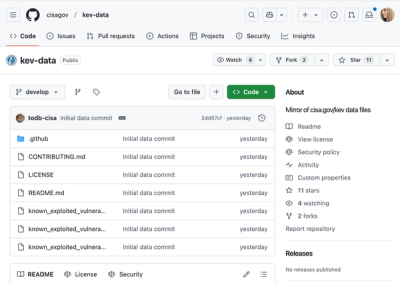
Security News
PyPI’s New Archival Feature Closes a Major Security Gap
PyPI now allows maintainers to archive projects, improving security and helping users make informed decisions about their dependencies.
AutoFaker is a Python library designed to minimize the setup/arrange phase of your unit tests by removing the need to manually write code to create anonymous variables as part of a test cases setup/arrange phase.
This library is heavily inspired by AutoFixture and was initially created for simplifying how to write unit tests for ETL (Extract-Transform-Load) code running from a python library on an Apache Spark cluster in Big Data solutions.
When writing unit tests you normally start with creating objects that represent the initial state of the test. This phase is called the arrange or setup phase of the test. In most cases, the system you want to test will force you to specify much more information than you really care about, so you frequently end up creating objects with no influence on the test itself just simply to satisfy the compiler/interpreter
AutoFaker is available from PyPI and should be installed using pip
pip install autofaker
AutoFaker can help by creating such anonymous variables for you. Here's a simple example:
import unittest
from autofaker import Autodata
class Calculator:
def add(self, number1: int, number2: int):
return number1 + number2
class CalculatorTests(unittest.TestCase):
def test_can_add_two_numbers(self):
# arrange
numbers = Autodata.create_many(int, 2)
sut = Autodata.create(Calculator)
# act
result = sut.add(numbers[0], numbers[1])
# assert
self.assertEqual(numbers[0] + numbers[1], result)
Since the point of this library is to simplify the arrange step of writing unit tests, we can use the
@autodata and @fakedata are available to explicitly state
whether to use anonymous variables or fake data and construct our system under test.
To use this you can either define the types or the arguments as function arguments to the decorator, or specify
argument annotations
import unittest
from autofaker import autodata
class Calculator:
def add(self, number1: int, number2: int):
return number1 + number2
class CalculatorTests(unittest.TestCase):
@autodata(Calculator, int, int)
def test_can_add_two_numbers_using_test_arguments(self, sut, number1, number2):
result = sut.add(number1, number2)
self.assertEqual(number1 + number2, result)
@autodata()
def test_can_add_two_numbers_using_annotated_arguments(self,
sut: Calculator,
number1: int,
number2: int):
result = sut.add(number1, number2)
self.assertEqual(number1 + number2, result)
There are times when completely anonymous variables don't make much sense, especially in data centric scenarios.
For these use cases this library uses Faker for generating fake data. This option
is enabled by setting use_fake_data to True when calling the Autodata.create() function
from dataclasses import dataclass
from autofaker import Autodata
@dataclass
class DataClass:
id: int
first_name: str
last_name: str
address: str
job: str
data = Autodata.create(DataClass, use_fake_data=True)
print(f'id: {data.id}')
print(f'name: {data.name}')
print(f'job: {data.job}\n')
The following code above might output something like:
id: 8952
name: Justin Wise
job: Chief Operating Officer
Currently autofaker supports creating anonymous variables for the following data types:
Built-in types:
Datetime types:
Classes:
Dataframes:
Create anonymous built-in types like int, float, str and datetime types like datetime and date
print(f'anonymous string: {Autodata.create(str)}')
print(f'anonymous int: {Autodata.create(int)}')
print(f'anonymous float: {Autodata.create(float)}')
print(f'anonymous complex: {Autodata.create(complex)}')
print(f'anonymous range: {Autodata.create(range)}')
print(f'anonymous bytes: {Autodata.create(bytes)}')
print(f'anonymous bytearray: {Autodata.create(bytearray)}')
print(f'anonymous datetime: {Autodata.create(datetime)}')
print(f'anonymous date: {Autodata.create(datetime.date)}')
The code above might output the following
anonymous string: f91954f1-96df-463f-a427-665c99213395
anonymous int: 2066712686
anonymous float: 725758222.8712853
anonymous datetime: 2017-06-19 02:40:41.000084
anonymous date: 2019-11-10 00:00:00
Creates an anonymous class
class SimpleClass:
id = -1
text = 'test'
cls = Autodata.create(SimpleClass)
print(f'id = {cls.id}')
print(f'text = {cls.text}')
The code above might output the following
id = 2020177162
text = ac54a65d-b4a3-4eda-a840-eb948ad10d5f
Create a collection of an anonymous class
class SimpleClass:
id = -1
text = 'test'
classes = Autodata.create_many(SimpleClass)
for cls in classes:
print(f'id = {cls.id}')
print(f'text = {cls.text}')
print()
The code above might output the following
id = 242996515
text = 5bb60504-ccca-4104-9b7f-b978e52a6518
id = 836984239
text = 079df61e-a87e-4f26-8196-3f44157aabd6
id = 570703150
text = a3b86f08-c73a-4730-bde7-4bdff5360ef4
Creates an anonymous dataclass
from dataclasses import dataclass
@dataclass
class DataClass:
id: int
text: str
cls = Autodata.create(DataClass)
print(f'id = {cls.id}')
print(f'text = {cls.text}')
The code above might output the following
id = 314075507
text = 4a3b3cae-f4cf-4502-a7f3-61115a1e0d2a
Creates an anonymous dataclass using fake data
@dataclass
class DataClass:
id: int
name: str
address: str
job: str
country: str
currency_name: str
currency_code: str
email: str
safe_email: str
company_email: str
hostname: str
ipv4: str
ipv6: str
text: str
data = Autodata.create(DataClass, use_fake_data=True)
print(f'id: {data.id}')
print(f'name: {data.name}')
print(f'job: {data.job}\n')
print(f'address:\n{data.address}\n')
print(f'country: {data.country}')
print(f'currency name: {data.currency_name}')
print(f'currency code: {data.currency_code}\n')
print(f'email: {data.email}')
print(f'safe email: {data.safe_email}')
print(f'work email: {data.company_email}\n')
print(f'hostname: {data.hostname}')
print(f'IPv4: {data.ipv4}')
print(f'IPv6: {data.ipv6}\n')
print(f'text:\n{data.text}')
The code above might output the following
id: 8952
name: Justin Wise
job: Chief Operating Officer
address:
65939 Hernandez Parks
Rochaport, NC 41760
country: Equatorial Guinea
currency name: Burmese kyat
currency code: ERN
email: smithjohn@example.com
safe email: kent11@example.com
work email: marissagreen@brown-cole.com
hostname: db-90.hendricks-west.org
IPv4: 66.139.143.242
IPv6: 895d:82f7:7c13:e7cb:f35d:c93:aeb2:8eeb
text:
Movie author culture represent. Enjoy myself over physical green lead but home.
Share wind factor far minute produce significant. Sense might fact leader.
Create an anonymous class with nested types
class NestedClass:
id = -1
text = 'test'
inner = SimpleClass()
cls = Autodata.create(NestedClass)
print(f'id = {cls.id}')
print(f'text = {cls.text}')
print(f'inner.id = {cls.inner.id}')
print(f'inner.text = {cls.inner.text}')
The code above might output the following
id = 1565737216
text = e66ecd5c-c17a-4426-b755-36dfd2082672
inner.id = 390282329
inner.text = eef94b5c-aa95-427a-a9e6-d99e2cc1ffb2
Create a collection of an anonymous class with nested types
class NestedClass:
id = -1
text = 'test'
inner = SimpleClass()
classes = Autodata.create_many(NestedClass)
for cls in classes:
print(f'id = {cls.id}')
print(f'text = {cls.text}')
print(f'inner.id = {cls.inner.id}')
print(f'inner.text = {cls.inner.text}')
print()
The code above might output the following
id = 1116454042
text = ceeecf0c-7375-4f3a-8d4b-6d7a4f2b20fd
inner.id = 1067027444
inner.text = 079573ce-1ef4-408d-8984-1dbc7b0d0b80
id = 730390288
text = ff3ca474-a69d-4ff6-95b4-fbdb1bea7cdb
inner.id = 1632771208
inner.text = 9423e824-dc8f-4145-ba47-7301351a91f8
id = 187364960
text = b31ca191-5031-43a2-870a-7bc7c99e4110
inner.id = 1705149100
inner.text = e703a117-ba4f-4201-a31b-10ab8e54a673
Create a Pandas DataFrame using anonymous data generated from a specified type
class DataClass:
id = -1
type = ''
value = 0
pdf = Autodata.create_pandas_dataframe(DataClass)
print(pdf)
The code above might output the following
id type value
0 778090854 13537c5a-62e7-488b-836e-a4b17f2f3ae9 1049015695
1 602015506 c043ca8d-e280-466a-8bba-ec1e0539fe28 1016359353
2 387753717 986b3b1c-abf4-4bc1-95cf-0e979390e4f3 766159839
Create a Pandas DataFrame using fake data generated from a specified type
class DataClass:
id = -1
type = ''
value = 0
pdf = Autodata.create_pandas_dataframe(DataClass, use_fake_data=True)
print(pdf)
The code above might output the following
first_name id last_name phone_number
0 Lawrence 7670 Jimenez 001-172-307-0561x471
1 Bryan 9084 Walker (697)893-6767
2 Paul 9824 Thomas 960.555.3577x65487
For tips and tricks on software development, check out my blog
If you find this useful and feel a bit generous then feel free to buy me a coffee ☕
FAQs
Python library designed to minimize the setup/arrange phase of your unit tests
We found that autofaker demonstrated a healthy version release cadence and project activity because the last version was released less than a year ago. It has 1 open source maintainer collaborating on the project.
Did you know?

Socket for GitHub automatically highlights issues in each pull request and monitors the health of all your open source dependencies. Discover the contents of your packages and block harmful activity before you install or update your dependencies.

Security News
PyPI now allows maintainers to archive projects, improving security and helping users make informed decisions about their dependencies.

Research
Security News
Malicious npm package postcss-optimizer delivers BeaverTail malware, targeting developer systems; similarities to past campaigns suggest a North Korean connection.

Security News
CISA's KEV data is now on GitHub, offering easier access, API integration, commit history tracking, and automated updates for security teams and researchers.